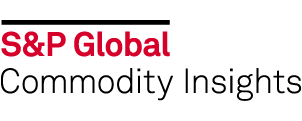
Download Report IHS CEH Report : Methyl Methacrylate (Chemical Economics Handbook 2019)
PDF by S&P Global Commodity Insights; IHS Markit
Information
Format: PDF Language: English Pages: 105 Publisher: S&P Global Commodity Insights; IHS Markit Publitshion date: 2019 ISBN: 98632
$49
Delivery time: Maximum 24 hours
Description
Methyl methacrylate is by far the most important methacrylic acid ester. It is a colorless, volatile, flammable liquid that is slightly soluble in water. It polymerizes readily upon heating in the presence of a free radical initiator to form polymethyl methacrylate (PMMA) resins, which have excellent transparency, strength, and outdoor durability. Construction/remodeling activity, automotive applications, and original equipment manufacture (OEM) account for approximately 80% of world methyl methacrylate consumption. Demand for these markets is greatly influenced by general economic conditions. As a result, demand for methyl methacrylate largely follows the patterns of the leading world economies. The markets for methyl methacrylate are largely captive; many large producers consume 50–60% of their production captively, mainly for PMMA resins or surface coatings.The world methyl methacrylate (MMA) market was approximately 3.5 million metric tons in 2018. Polymethyl methacrylate (PMMA), including PMMA sheet, and PMMA pellets for molding and extruded products, made up the largest share for applications, followed by MMA for acrylic surface coatings and other applications. The world MMA market is expected to grow at 3.1% per year in 2018–23, reaching 4.0–4.1 million metric tons in 2023.
The period from 2017 through the entirety of 2018 proved to be very difficult for the global MMA market. During this time, there were many planned and unplanned outages at several MMA units; spanning from China, the United States, and Western Europe. This created a substantial global supply shortage, as prices rose concurrently. On a positive note, Saudi Arabia introduced two large joint-venture MMA units during 2018 that supplied much new material to the global market. In early 2019, supply started to catch up to demand and stabilization began to occur, as prices also started to decrease.
Regionally, the United States has dominated the MMA North American market. The United States is the second-largest global consumer of MMA. In 2017, the US Gulf Coast was impacted heavily by Hurricane Harvey, which created an MMA supply constraint. This was further impacted in 2018 by other planned and unplanned outages in the United States. During this time, imports started to increase to satisfy domestic demand. Consumption of MMA in the United States is expected to grow at 2.2% per year from 2018 to 2023.
From 2015 to 2017, consumption of MMA in Central and South America declined significantly, at an average annual rate of 28%, due mainly to the Brazilian recession and weakening markets. During 2017–18, the beginnings of a rebound in MMA consumption was noticed. Brazil has been the only producer of MMA in the region. Consumption of MMA in Central and South America is expected to grow at 3.3% per year from 2018 to 2023.
Like the United States, the Western European region also suffered from many planned and unplanned outages for MMA in 2017 and 2018. In 2019, MMA production has stabilized and is running at normal operating rates of 80–85% of capacity. In addition, the second-largest global producer of MMA, Evonik, sold its methacrylates business to Advent International. The finalization of this acquisition is expected to take place in the third quarter of 2019. It will be interesting to see how Advent will ultimately proceed with this new business. Consumption of MMA in Western Europe is expected to grow at 2% per year from 2018 to 2023. Higher rates are expected for Central and Eastern Europe.
In 2018, Saudi Arabia added an enormous amount of MMA capacity. Petro-Rabigh’s MMA plant in Saudi Arabia was commissioned in late 2017 and started commercial operations in January 2018. The Saudi Methacrylates Company (SAMAC) also started MMA production in late 2017, and reached full commercial operation in April 2018. The SAMAC plant uses its C2-ethylene-Alpha Process technology, while the Petro-Rabigh unit uses isobutylene for MMA production. The addition of these two units in Saudi Arabia has supplied the MMA market in general with necessary and timely additional supply for MMA in 2018 and 2019.
Japan is a net exporting country of MMA; Japan exported around 40% of its production during 2011–17. In 2018, Japanese exports declined to around 30% of production mainly because large MMA plants of Japanese joint ventures in Saudi Arabia started up in the same year. Japanese consumption of MMA is relatively stable, between 260,000 and 290,000 metric tons per year for 2011–17. This trend is expected to continue for 2018–19. MMA is used primarily for PMMA in Japan, which accounted for around 55–60% of total consumption. Regarding producers, Mitsubishi Rayon (now Mitsubishi Chemical) is the largest MMA producer in the world, with a 31% world MMA capacity share and locations in several countries.
In 2018, China was the largest global consumer of MMA, at roughly 22% of global consumption. The MMA industry developed rapidly in previous years, especially for the C4 process, since three local producers entered the market almost in one year, which significantly changed the process structure of the industry in China. Production of MMA in China has been growing and is estimated to continue to grow since new capacity is scheduled to be released, although the Chinese government has restricted imports of recycled plastics. MMA produced from recycled PMMA scrap has significantly decreased in China, and eventually will gradually quit the market. There has been a big increase in the Chinese export market in the last two years since the tight global supply situation, which also resulted in price increases in the domestic market.
In Other Asia, MMA consumption has increased at 5% per year in the last 10 years. In the same period, capacity increased at 6% per year and production increased at 5% per year. Singapore, South Korea, Taiwan, and Thailand produce and export MMA. Singapore and Thailand are large exporters of MMA. Other Asian countries import MMA for production of cast sheet and acrylic paints and coatings. For PMMA molding, these countries import MMA pellets rather than MMA monomer for economic reasons. MMA consumption in Other Asia is expected to increase at around 2–3% per year during 2018–23.
$49
Delivery time: Maximum 24 hours
